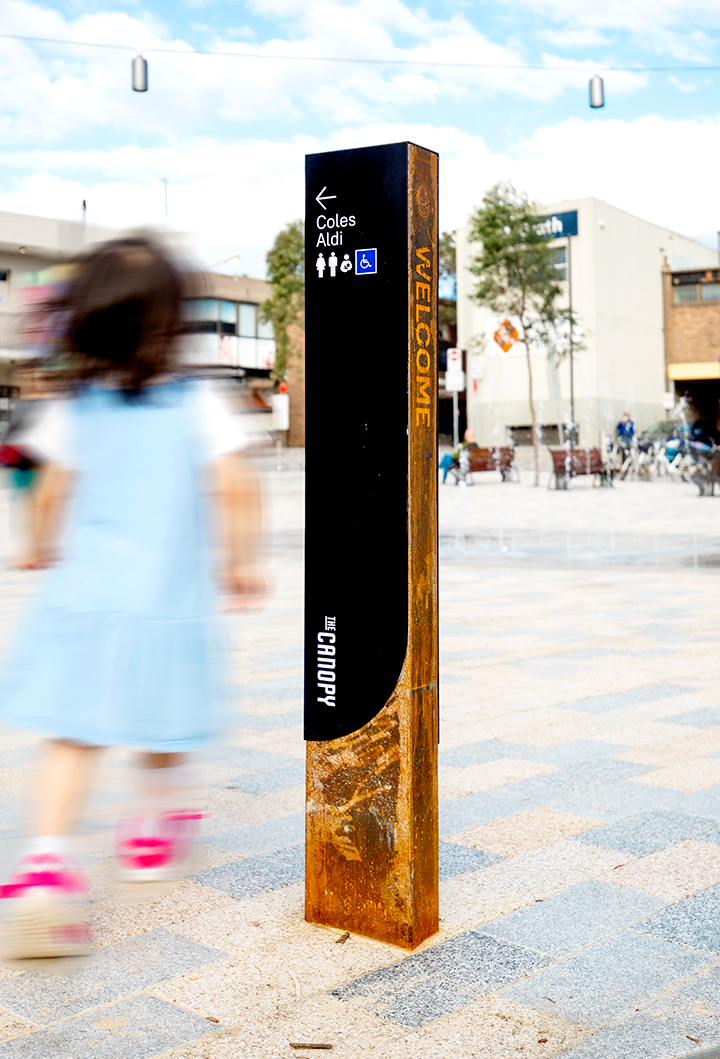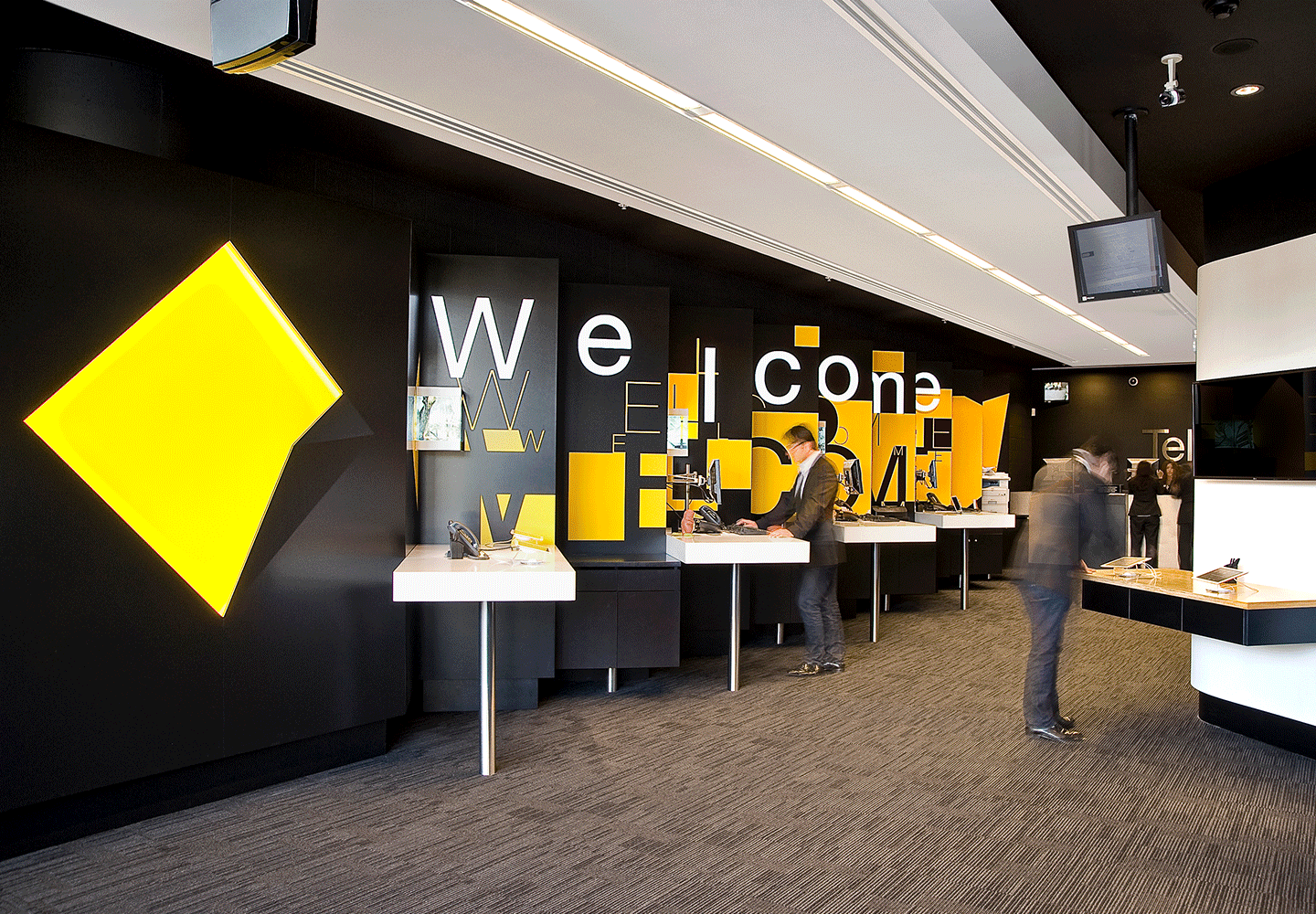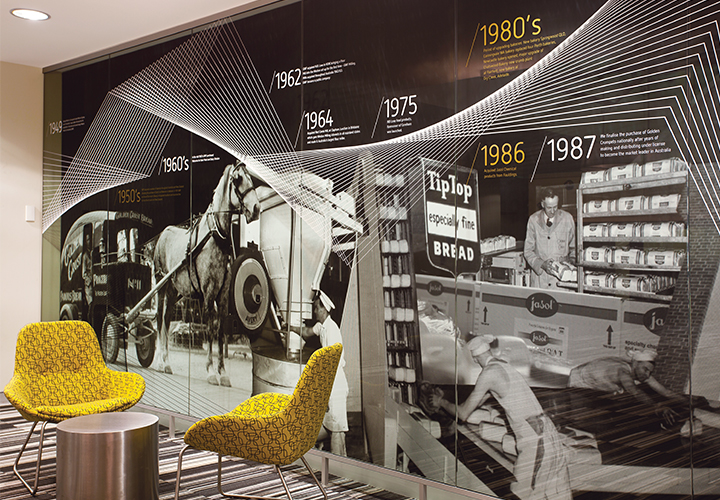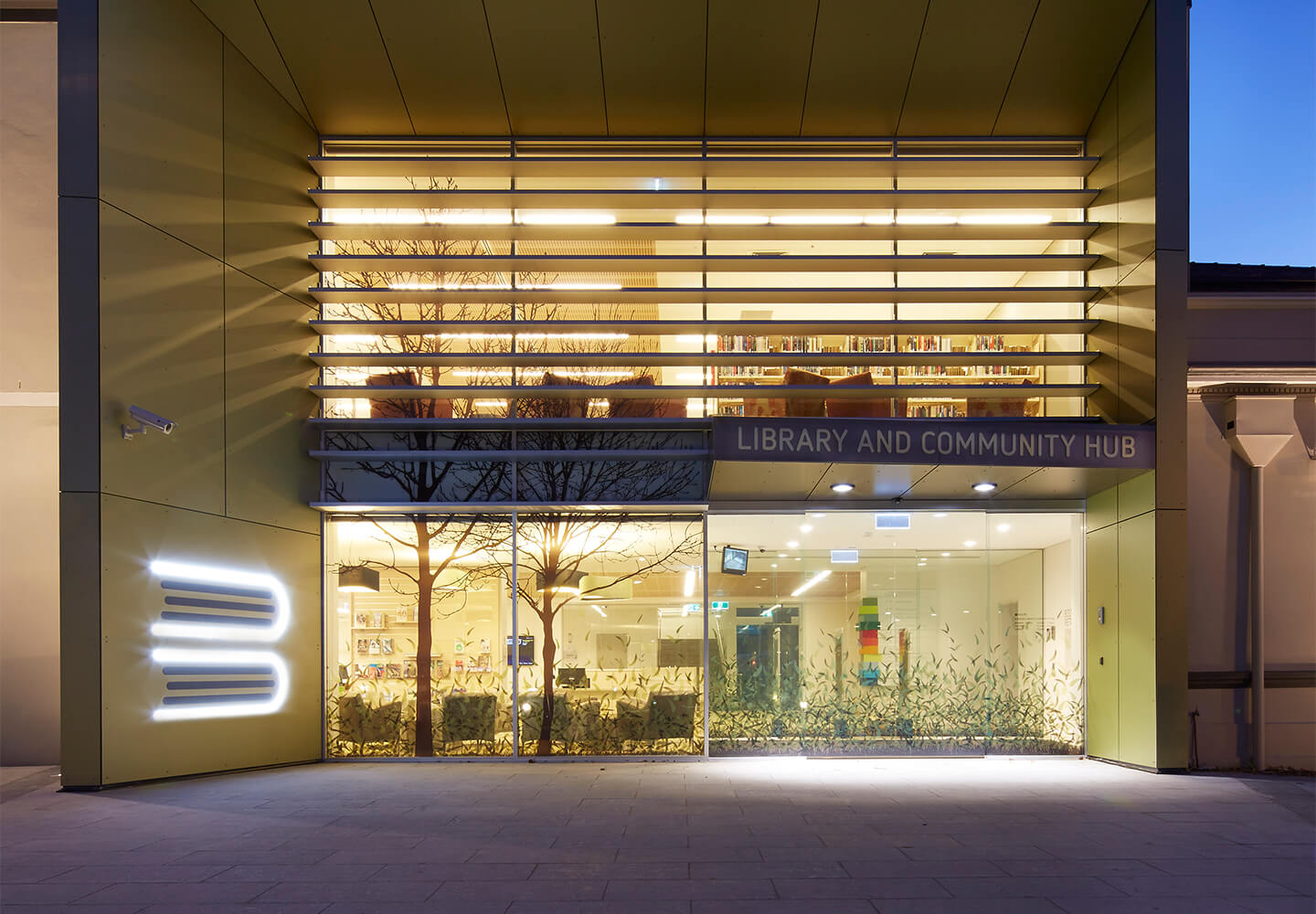The success of any development or destination starts with having an authentic place vision and a brand that sparks emotions.
Place branding has rightly emerged as a specialist branch of branding. Yet the rise of place branding means many place brands not only look the same – they’re making the same kinds of promises, too.
To differentiate built environments in an authentic way, what’s needed is an approach that puts people at the heart of planning. This means talking to locals to find out what excites them, and getting their buy-in from the outset. When we devised place branding and wayfinding strategies for The Canopy, our approach was hugely collaborative: Lane Cove Council received over 250 name suggestions from the local community, who were consulted throughout the process.
Likewise, if you’re an employer, it’s important to talk to your own people: what’s going to make them feel good in your environment? According to City Nation Place, your place brand is “as much about your architecture, infrastructure, and physical attractions as it is about your values and your people”. So, when BrandCulture designed environmental graphics for CBA’s flagship retail branch in Darling Quarter, we welcomed customers by reflecting CBA’s core values and its unmistakable visual identity. Darling Quarter itself set a new benchmark for placemaking by combining lively community spaces with two campus-style commercial buildings.
Things to consider when branding places
Place branding starts with having a clear vision for a place, supported by a strategy for activating your brand over time. It’s about creating a brand that makes people feel something, whether that’s nostalgia, pride, excitement or belonging.
It’s a good idea to develop your place vision in close consultation with the local community. Focus groups, resident or employee surveys and stakeholder meetings will be a key part of your process – you want different segments of the community to feel like they are co-creators of this vision.
Celebrate your differences. Many of the best place brands are imbued with a sense of history, or tell an authentic story about the people who came before.
Think of place branding as a blueprint. It may start with a logo, but ultimately your place vision and brand strategy will guide everything you do – including your wayfinding system, which also plays an important role in how your place brand is perceived. There’s a strong business case to make for getting it right.
Place branding in the COVID era
The coronavirus pandemic will radically change the rules of place branding. According to The Place Brand Observer, destination branding will be less about promoting landmarks, with more emphasis on safety and experiences. For many destinations, sustainability, safety and resilience will be a key part of the messaging. This is true for employers, too, which must entice talent back to the office after months of working from home.
As overwhelming as 2020 has been, the COVID era presents an opportunity for reinvention, rethinking and learning. It is the perfect time to nurture your brand voice and identity and build more resilient place brands. If you are leading the way as a socially responsible, safe and resilient destination, it’s a good time to be promoting these qualities.
As Todd Babiak, CEO of Brand Tasmania, says: “I see this crisis as a huge and crucial opportunity for place branding. Our communities have never been so engaged, so focused on what really matters, and the rebuilding period will be defined by places and people who have strong place brand programs in place and those who… don’t.”
This story also appears in BrandCulture’s journal – for a dose of inspiration and the latest design trends, download issue 01 here.



